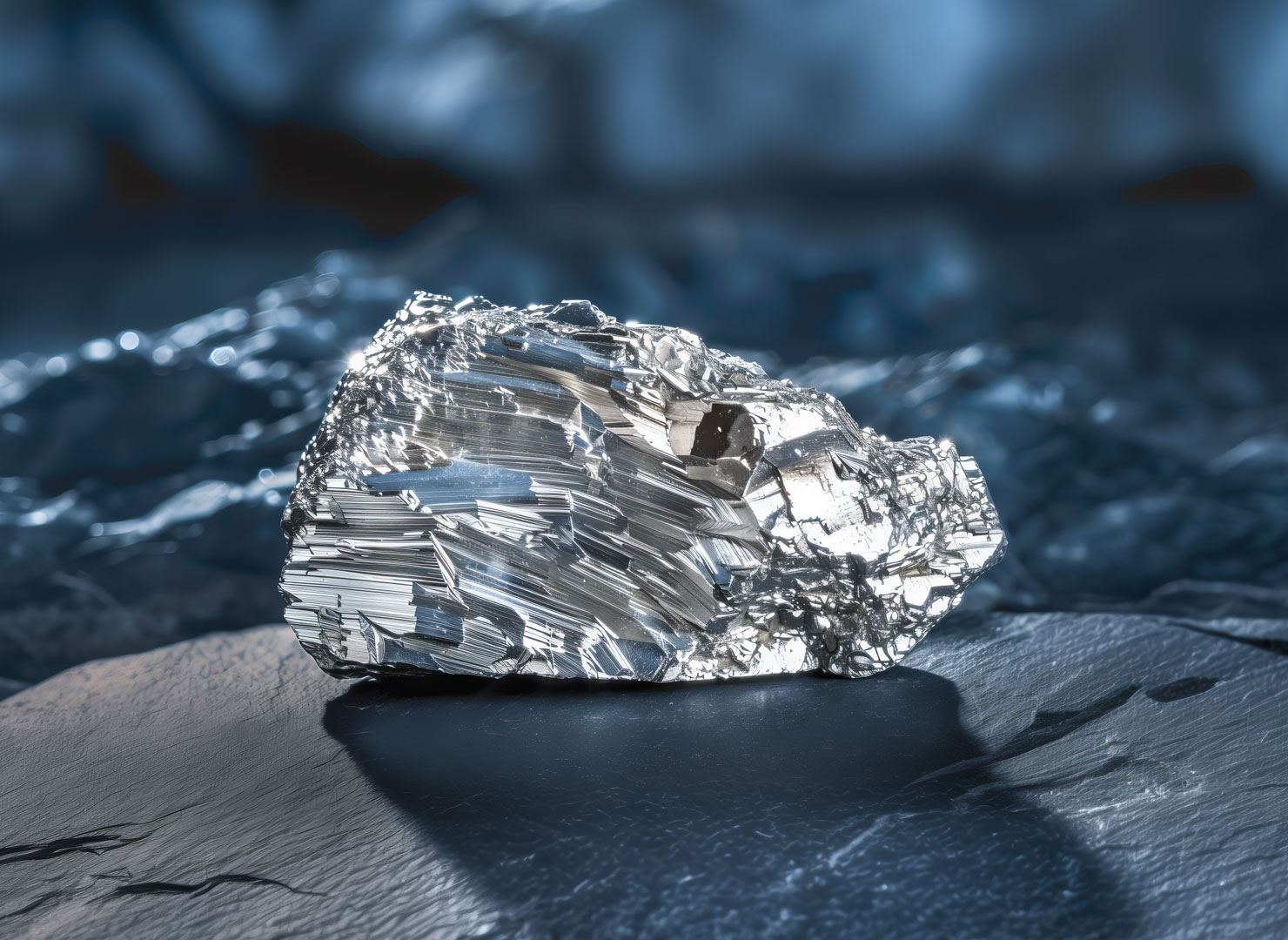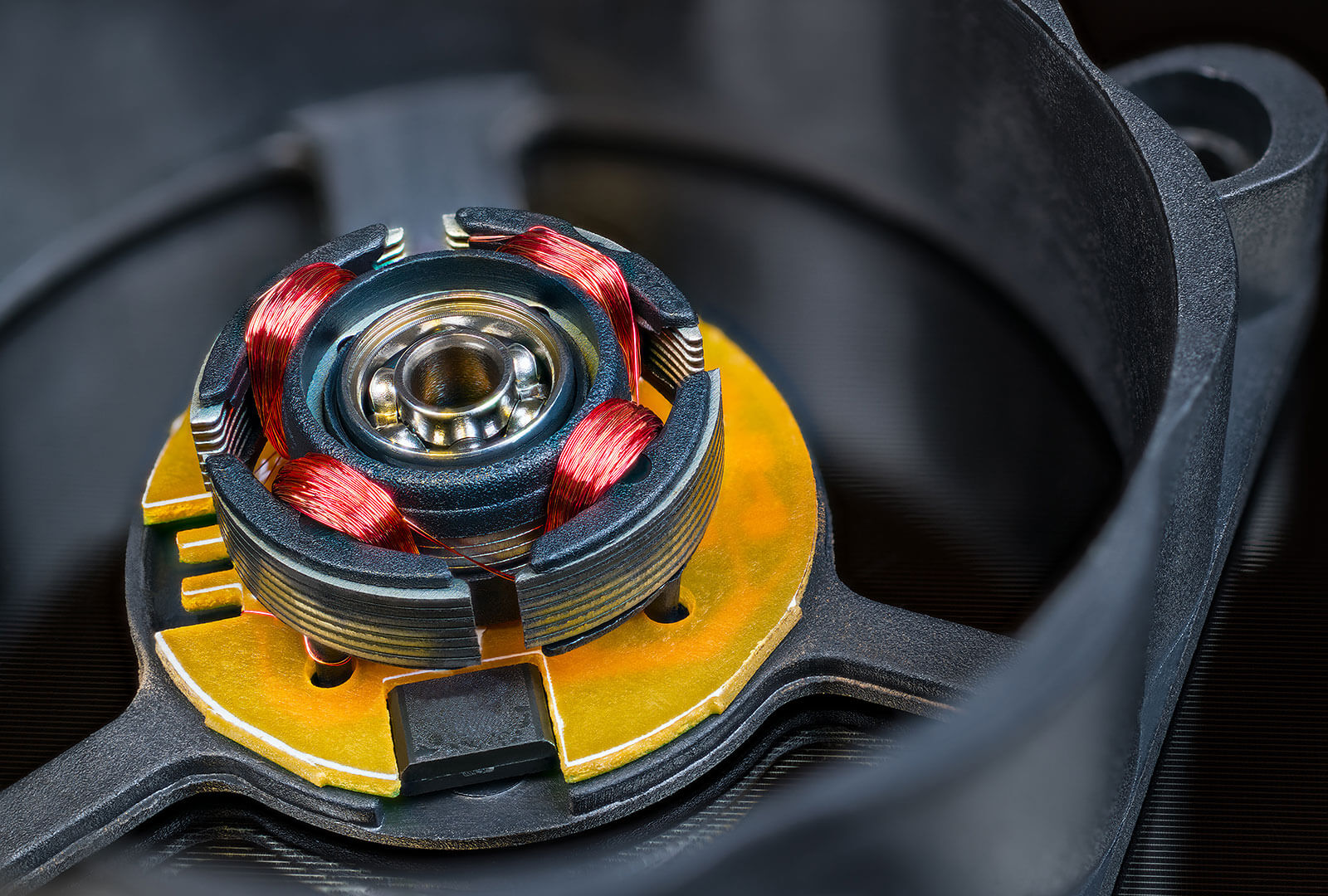The Element Samarium
On this page you can find out more about the rare earth element
Name: Samarium
Symbol: Sm
Ordinal number: 62
Density: 7,52 g/cm3
Melting point: 1.077 °C
Boiling temperature: 1.791 °C
Samarium is one of the lanthanidesA group of 15 elements with chemically very similar properties. in the periodic table.
Introduction
Increases Resistance: Samarium Makes Magnets Heat-Resistant
Samarium is a light rare earth element mainly used in strong magnets that must also be heat-resistant. The element is classified as a critical raw material and has many areas of application.

Mining Engineer as Godfather for the Name
It is unclear who discovered samarium. The literature provides various references. The Encyclopedia Britannica, for example, names the French chemist Paul-Émile Lecoq de Boisbaudran, who isolated the element from samarskite in 1878, a mineral named after the Russian mining engineer Vasily Yevgrafovich Samarsky-Bykhovets. The German chemist Wilhelm Muthmann extracted metallic samarium for the first time in 1903.
Main areas of application for samarium

One Possible Discoverer of Samarium
Paul-Émile Lecoq de Boisbaudran, born in France in 1838, initially worked in his family’s cognac business. From the age of 20, he conducted research in his own laboratory in his spare time and helped develop spectroscopy. This technique enabled him to discover four elements, the best-known of which is gallium.
Characteristics
Samarium Forms a Yellow Oxide Layer When Exposed to Air
Samarium has a silvery sheen but becomes duller and forms a yellowish oxide layer when exposed to air.
Areas of Application
More Heat-Resistant and More Expensive Than Other Permanent Magnets
High-performance magnets are an important area of application for samarium. This is because samarium-cobalt magnets retain their performance even at temperatures of around 300 degrees Celsius. However, they are more expensive to produce than permanent magnets made of neodymium-iron-boron, so their commercial importance is lower. Samarium is also used in the control rods of nuclear reactors and medicine in pain therapies for bone metastases.

Permanent Magnets
Permanent magnets retain their magnetic force without external energy inputs. They are in great demand in areas that require high power density, such as electromobility and wind power. They are the driving force behind many environmentally friendly technologies.
Learn more

Medical Technology
Rare earths are used in medical diagnostic and treatment technologies, including X-ray machines, MRI machines, nuclear medicine, prostheses, implants, and medical lasers.
Learn more

Nuclear Power
Nuclear reactors generate energy by splitting atomic nuclei. Nuclear power is currently making a comeback in many countries. This trend could further increase the demand for rare earths, some of which are used in reactor control rods.
Learn more

Semiconductors
Semiconductors are solids whose conductivity can be modified by doping with rare earths. Semiconductors form the basis for LEDs, microprocessors, solar cells, and many lasers.
Learn more
Deposits
European Union and US Classify Supply as Critical
Bastnäsite and monazite are important minerals for the extraction of samarium, and both are found at the world’s most important rare earth mine, Bayan Obo, in northern China. Other large deposits can be found in the US (Mountain Pass) and Australia (Mount Weld).
The map shows the countries where these deposits are located.

EU Wants Target Quota for Domestic Extraction
Both the United States and the European Union classify rare earths as critical raw materials. The EU has set target quotas for the domestic extraction, processing, and recycling of samarium and other rare earths required for permanent magnets, which once again underlines the importance of these elements. These quotas were laid down in the European Critical Raw Materials Act.
Raw Materials Trading Industrial Customers
TRADIUM trades in all industrially relevant rare earth oxides. Choose from a wide range of specifications and take advantage of the option to reserve batches for the long term.
Purchase of Physical Assets for Private Customers
Benefit as a private customer from the exciting market for rare earths as a physical asset. You can find out here what opportunities TRADIUM offers and what tax advantages a purchase of raw materials entails.